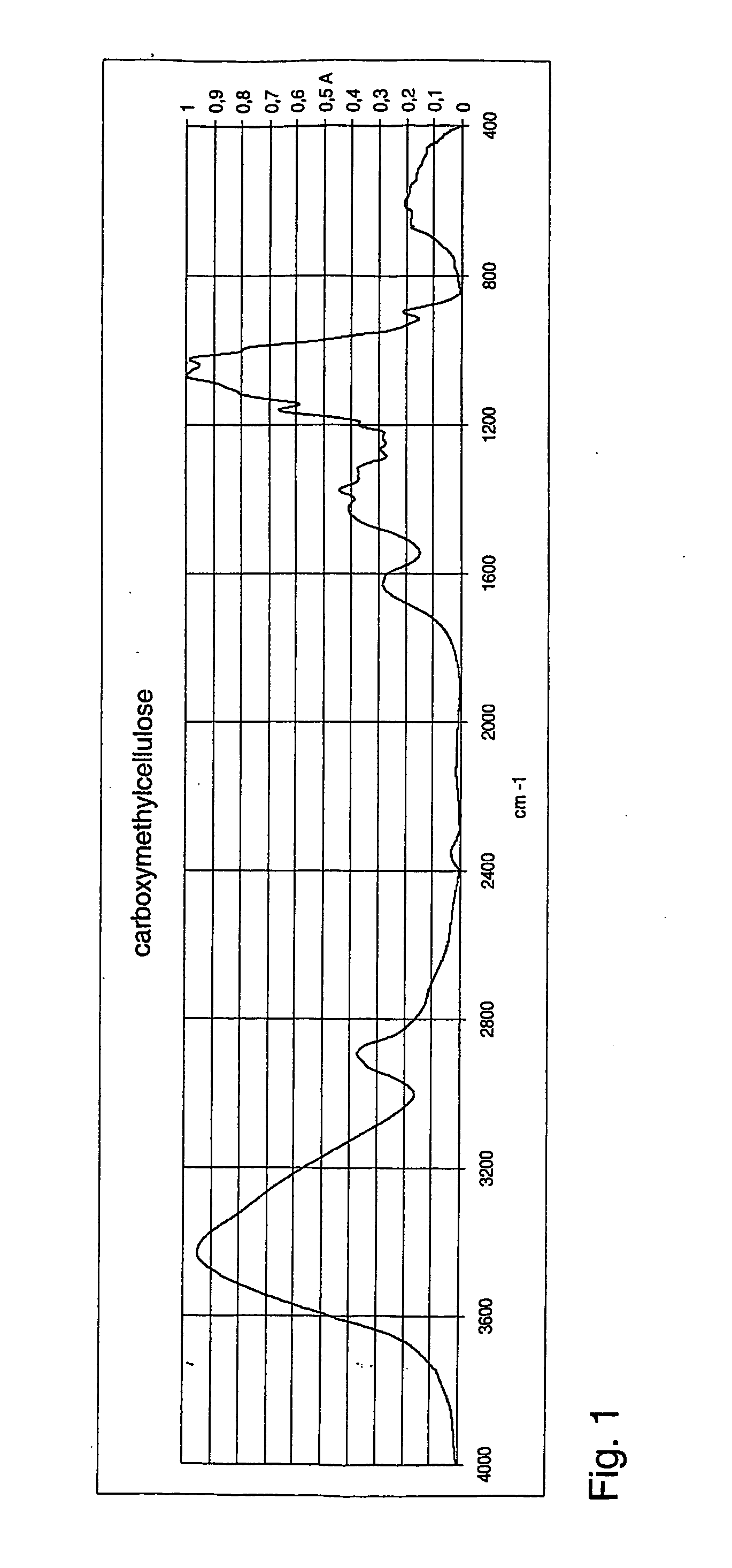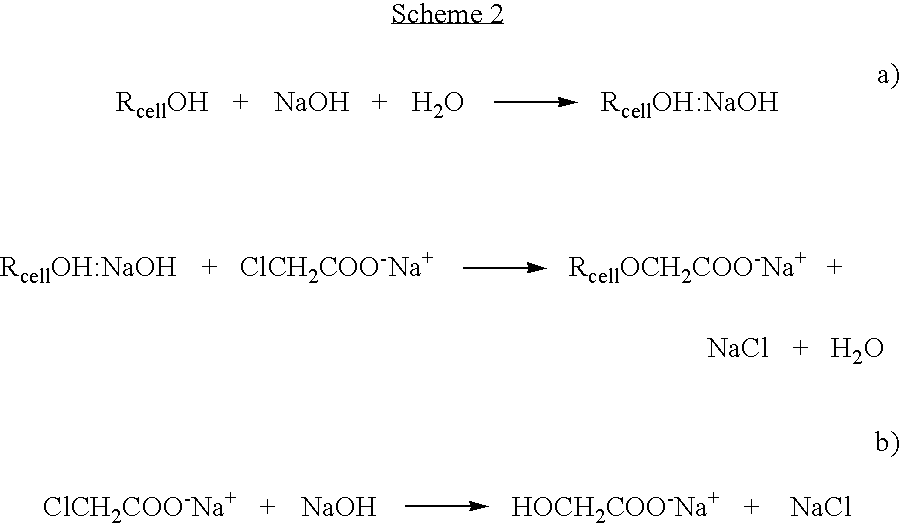Method for preparing a cellulose ether
a cellulose ether and ether technology, applied in the field of cellulose ether preparation, can solve the problems of limiting the degree of conversion achieved, increasing the inefficiency of synthesis under heterogeneous starting conditions, and reducing the degree of conversion, so as to prevent the degradation of the cellulose chain, the effect of efficient and economic reactions and good solubility of reagents
- Summary
- Abstract
- Description
- Claims
- Application Information
AI Technical Summary
Benefits of technology
Problems solved by technology
Method used
Image
Examples
example
Carboxymethylation of Cellulose
[0112] 50 mg of cellulose was dissolved into an ionic liquid (BMIMCl, 5 g, melting point 60° C.) with the aid of microwaves, resulting in 1% solution. Addition of monochloroacetic acid (2.05 eqv.) was followed by addition of slight excess of solid NaOH (3.25 eqv.). The reaction was conducted at 100° C. for two hours under microwave radiation. The product was precipitated by adding methanol to reaction mixture. The precipitate was filtered off and the by-product salts were removed by washing the precipitate with methanol and 80% aqueous methanol solution. The washed product CMC was dried overnight in oven at 105° C. and analysed with FTIR. The obtained spectrum for carboxymethylcellulose is shown in FIG. 1 [1630 cm−1yas(COO−), 1424 cm−1ys(COO−)].
PUM
| Property | Measurement | Unit |
|---|---|---|
| Temperature | aaaaa | aaaaa |
| Pressure | aaaaa | aaaaa |
Abstract
Description
Claims
Application Information
 Login to View More
Login to View More - R&D
- Intellectual Property
- Life Sciences
- Materials
- Tech Scout
- Unparalleled Data Quality
- Higher Quality Content
- 60% Fewer Hallucinations
Browse by: Latest US Patents, China's latest patents, Technical Efficacy Thesaurus, Application Domain, Technology Topic, Popular Technical Reports.
© 2025 PatSnap. All rights reserved.Legal|Privacy policy|Modern Slavery Act Transparency Statement|Sitemap|About US| Contact US: help@patsnap.com



